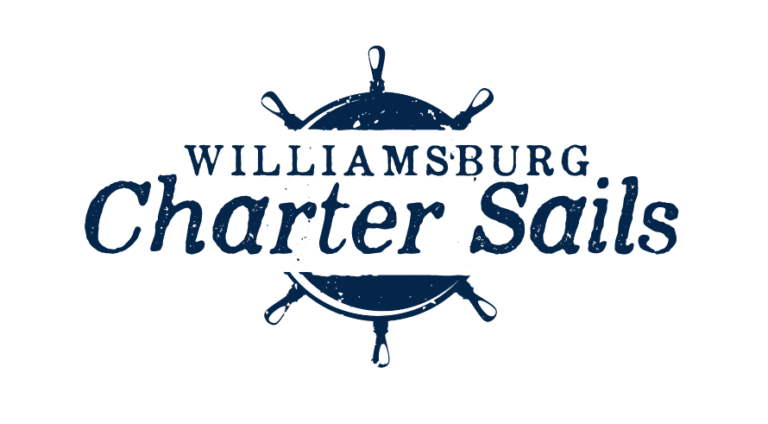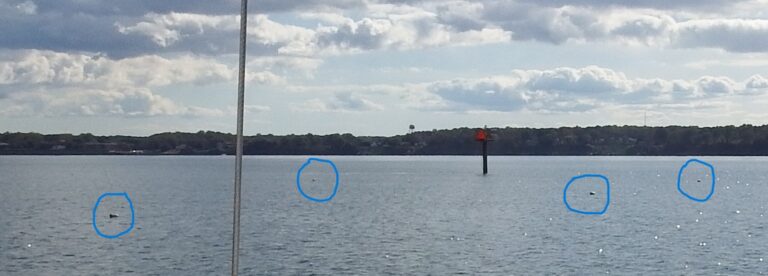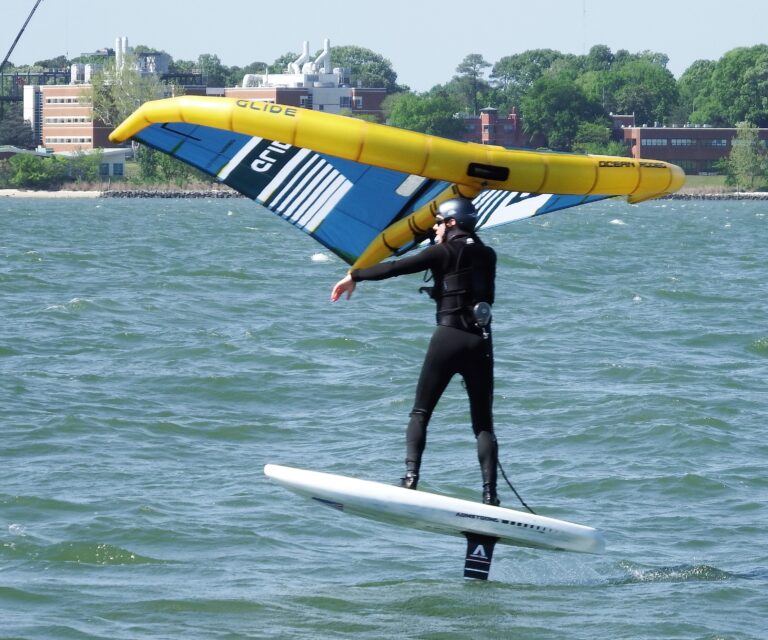They are comparatively few and far between today, but oysters used to clog the Chesapeake Bay. These days, we see precious few oyster men while sailing the York River. Virginia’s catch has dropped from nearly 8 million bushels in the early 1900s to half a million today.
The industry began here in the early 1800s when the oyster grounds around New York City were exhausted. When canning was perfected, the Chesapeake started shipping oysters all over the world. But as they began to feed more people, oystermen began destroying the very reefs where they prospered.
They grow in the water, of course, but delicately so. Oysters tend to do best when growing on top of each other and eventually form huge reefs. Boats that ran over them too low often had their bottom sheared off or holed from the sharp edges. The natural reefs of the Chesapeake tributaries grew so big that they formed barriers across the rivers and had to be cut through for shipping channels.
Oysters grow at discrete levels of water. They’ll do fine on the surface but are subject to weather and sunlight damage. Deeper down, they do well just off the bottom of the riverbed but are harder to observe.
Many experiments have been made to grow oysters in quantity. York River Yacht Haven at Gloucester Point had special floating docks built with oyster boxes for early nurturing, but storms and the “red tide” doomed the project. Near the Goodwin Islands at the mouth of the York, realtor Greg Garrett and a neighbor ran into political disputes and lawsuits over growing oysters in their back yard waters, which they insist is covered under Virginia’s aquaculture laws. The neighbors fear commercial expansion.
Today the Watermen’s Museum in Yorktown has at least two experiments going to test best practices. Students from Lafayette High School in James City are using traditional PVC pipe platforms to grow oysters. Students at the Montessori School in Williamsburg are using smaller, rounded plastic cages developed by Canadians.
-
Adapted from “York River Stewardship: The History of the Watermen and Life along the Shores of the York,” by Michael Steen, director of programs for the Watermen’s Museum, Christopher Wren Association, Oct. 19, 2015.



